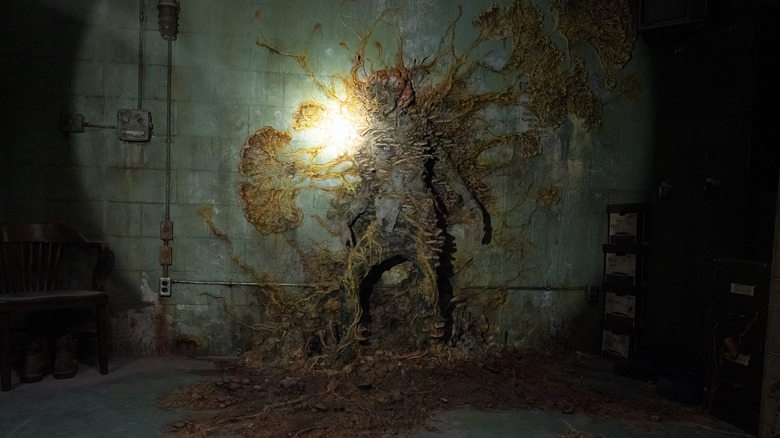Don't Worry Last Of Us Fans, Scientists Promise That Cordyceps Infections Are Completely Fictional
HBO has a smash hit on its hands with "The Last of Us," an adaptation of the classic PlayStation game of the same title. The show is a post-apocalyptic zombie survival horror series with one major twist. Just like in the game, the zombie outbreak is caused by a mutated version of a cordyceps fungi strain that hijacks the brains of its victims and turns them into mindless killers called Clickers. Given the focus on fungus and the realities of the past several years, "The Last of Us" no doubt has many viewers wondering just how likely the possibility of an apocalyptic fungal infection is in real life.
Well, rest assured, "The Last of Us" is strictly fictitious. While cordyceps do exist in real life, and while they are parasitic fungi, humanity has nothing to worry about. Certain strains of cordyceps, as noted in "The Last of Us," infect ants, hijacking their limbs to move into places where the fungus can continue to grow, then forcing them to bite down on a leaf where they stay rooted to the spot and the fungus feeds on the dead insect for nutrients (via Journal of Invertebrate Pathology). But those worried these fungi will one day cause a zombie apocalypse can take it easy. Humans have a physiology that is so different from that of an ant — not to mention so much larger — that there's no way for cordyceps to pull that same trick on one of us.
In fact, multiple scientists have already offered up explanations of how cordyceps and similar fungi actually work and why a "The Last of Us" scenario will remain relegated to television.
Cordyceps cannot infect humans, top mycologists assure
"The Last of Us" can count among its viewership Paul Edward Stamets, a mycologist whose contributions to the field, such as exploring the use of fungi to combat colony collapse among bee populations, have been recognized with an honorary doctorate from the National University of Natural Medicine (via The Olympian). Stamets took to Twitter after watching the first two episodes of the series to share his love for it, but he made clear that the basis of its science fiction is fully in the realm of fiction rather than science. "First, I'm a science-fiction fan," Stamets wrote, "and I love weaving the creative elements of fungi into the narrative. But let's get real. Cordyceps can not infect humans."
In subsequent tweets, Stamets explained that while there are predatory fungi, he thinks the plot of "The Last of Us" takes advantage of mycophobia, a fear of fungi. In his view, fungi can be put to use in the solution of humanity's most serious problems, and he's spent his life studying their application. Stamets praised the set designs on "The Last of Us," along with the show's lore, which he sees as a warning about human nature. "Who knows, a young person watching this series could become our Einstein of mycology and help save the world from the toxins we create," he wrote.
Additionally, other scientists have offered reassurance that "The Last of Us" can't happen in real life. Charissa de Bekker told Vox that parasitical fungi are each specialized to infect a certain species of ant. They can't jump to other insects, let alone humans. Additionally, Bekker noted that cordyceps keep insect populations in check and encourage biodiversity. "I hope the show sparks some interest in fungi in general," she said, "because they're incredibly fascinating organisms."

